The bond between dog and owner is certainly one of a kind. Having a loyal pup in the household ensures an incredible amount of love from dog to owner, in a "man's best friend" fashion. Although you may not think so, it's actually fairly easy to understand what your pup is asking of you. Some dogs are incredibly obvious when they want delightful bits of love and kisses, but sometimes dogs can behave in a subtle manner as well. Unfortunately, we can't physically speak to our dogs, but here are some signs your dog makes and their translation.
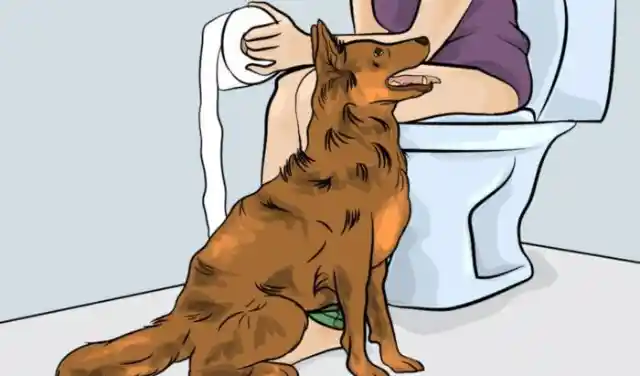
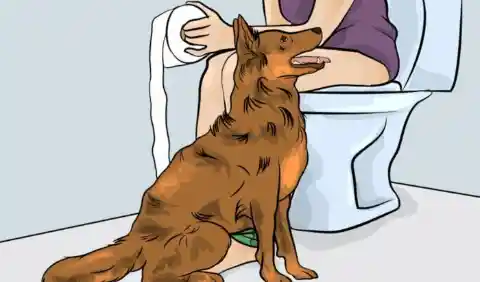
The bond between dog and owner is certainly one of a kind. Having a loyal pup in the household ensures an incredible amount of love from dog to owner, in a "man's best friend" fashion. Although you may not think so, it's actually fairly easy to understand what your pup is asking of you. Some dogs are incredibly obvious when they want delightful bits of love and kisses, but sometimes dogs can behave in a subtle manner as well. Unfortunately, we can't physically speak to our dogs, but here are some signs your dog makes and their translation.
Of course, a dog that follows you around for every step you take isn't completely ideal.....especially in more private places like the bathroom. But, you can't deny that it's completely adorable. If your dog follows you around constantly, you'll either find it incredibly endearing, or you'll be almost tripping him over him all time. There's been a few reasons to explain why this happens. One reason for this could be a breed trait. For some breeds, especially those that have been bred for centuries to work with people, and are more likely to be what people call "velcro dogs" or those that 'stick' by your side. It could also just be for companionship. Perhaps this is the most obvious reason, that some dogs just prefer the companionship of their human friends. "Over the process of domestication, natural selection has shaped dogs to become companions for humans," says Laurie Santos, a professor of psychology and director of the Canine Cognition Center at Yale University. "Domesticated dogs are now 'bonded' with humans in some of the same ways as human children. In this sense, our bond with dogs is one that has evolved over the course of domestications."
Of course, a dog that follows you around for every step you take isn't completely ideal.....especially in more private places like the bathroom.


But, you can't deny that it's completely adorable. If your dog follows you around constantly, you'll either find it incredibly endearing, or you'll be almost tripping him over him all time. There's been a few reasons to explain why this happens. One reason for this could be a breed trait. For some breeds, especially those that have been bred for centuries to work with people, and are more likely to be what people call "velcro dogs" or those that 'stick' by your side. It could also just be for companionship. Perhaps this is the most obvious reason, that some dogs just prefer the companionship of their human friends. "Over the process of domestication, natural selection has shaped dogs to become companions for humans," says Laurie Santos, a professor of psychology and director of the Canine Cognition Center at Yale University. "Domesticated dogs are now 'bonded' with humans in some of the same ways as human children. In this sense, our bond with dogs is one that has evolved over the course of domestications."
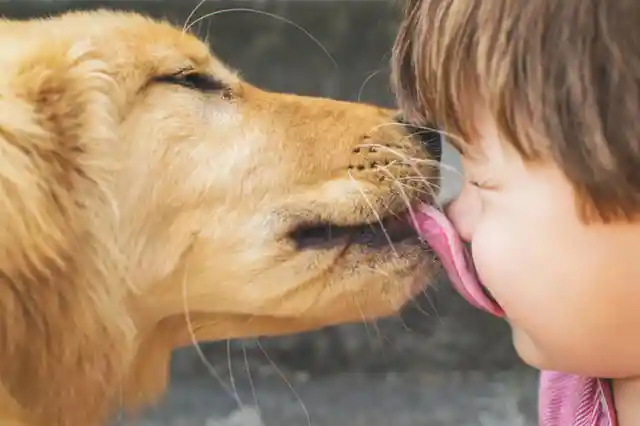
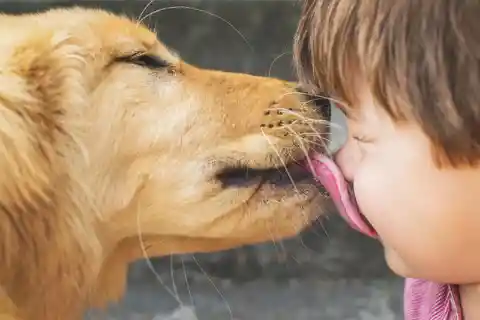
While some people love it, others might find it completely gross. It's a sure thing to say that dogs like giving people a couple licks every once in a while. What you probably DON'T know, is that giving licks is actually a form of submissive behavior, and it helps dogs in easing their stress, while also showing you love of course! This behavior may seem disturbing for many dog owners and usually many (non-dog owners). This behavior is a demonstration of friendliness, a pacifying gesture, a hand reaching for peace. It is a compliment in dog language, basically saying "I like you' you can be my friend."
While some people love it, others might find it completely gross.


It's a sure thing to say that dogs like giving people a couple licks every once in a while. What you probably DON'T know, is that giving licks is actually a form of submissive behavior, and it helps dogs in easing their stress, while also showing you love of course! This behavior may seem disturbing for many dog owners and usually many (non-dog owners). This behavior is a demonstration of friendliness, a pacifying gesture, a hand reaching for peace. It is a compliment in dog language, basically saying "I like you' you can be my friend."
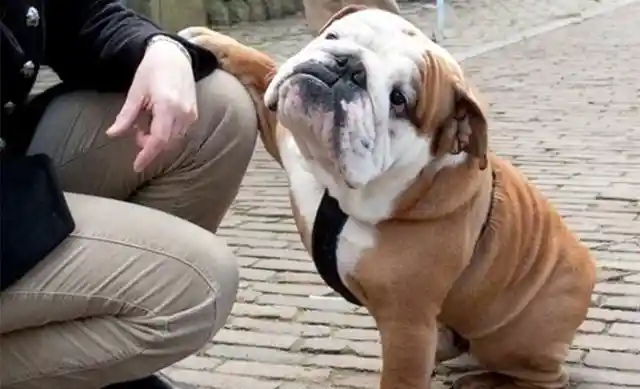
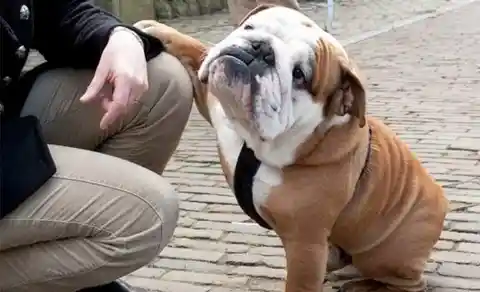
Dogs don't need to physically speak to their owners to sense that something is wrong or if you're upset. Dogs are also incredibly good at reading body language, and will also use their senses to detect if something is wrong. They'll also probably be more than willing to console you if you're feeling down. Science has been keeping a very close eye on dogs since no other species has ever really gotten that close to us. They are aware their sense of smell is far better than ours, and they can hear frequencies between 20Hz and 60Hz. People can only hear up to 20 Hz, giving dogs the advantage of hearing storms and earthquakes before they arrive. Their innate abilities to sense when something is wrong has been seen when a dog would howl like a baby when someone in the family is about to pass. .


Dogs don't need to physically speak to their owners to sense that something is wrong or if you're upset. Dogs are also incredibly good at reading body language, and will also use their senses to detect if something is wrong. They'll also probably be more than willing to console you if you're feeling down. Science has been keeping a very close eye on dogs since no other species has ever really gotten that close to us. They are aware their sense of smell is far better than ours, and they can hear frequencies between 20Hz and 60Hz. People can only hear up to 20 Hz, giving dogs the advantage of hearing storms and earthquakes before they arrive. Their innate abilities to sense when something is wrong has been seen when a dog would howl like a baby when someone in the family is about to pass. .
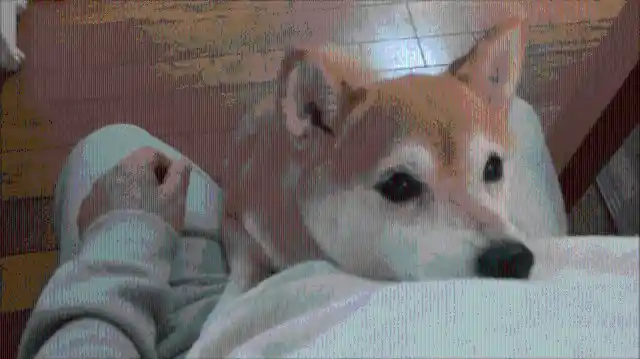
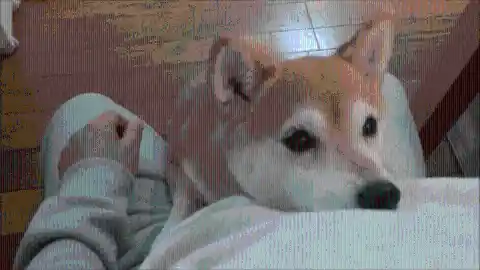
Although this is often mistaken for possessive behavior, it's actually a sign of anxiety or nervousness. In fact, "Dominance" is rarely the problem; your dog is just trying to feel safer by staying close to someone they feel comfortable with. Your dog is also guarding you. It is in your dog's best interest to show you unconditional love and of course, there's just nothing like a dogs affection. Being protective and guarding you wherever you go is just one of the many ways that they show it. They don't necessarily sit at your feet to guard you out of fear, they do this behavior because it's their way of showing that they want to keep you to themselves. One thing about dogs is that they love their attention, and you better believe that they do all they can to keep it.


Although this is often mistaken for possessive behavior, it's actually a sign of anxiety or nervousness. In fact, "Dominance" is rarely the problem; your dog is just trying to feel safer by staying close to someone they feel comfortable with. Your dog is also guarding you. It is in your dog's best interest to show you unconditional love and of course, there's just nothing like a dogs affection. Being protective and guarding you wherever you go is just one of the many ways that they show it. They don't necessarily sit at your feet to guard you out of fear, they do this behavior because it's their way of showing that they want to keep you to themselves. One thing about dogs is that they love their attention, and you better believe that they do all they can to keep it.
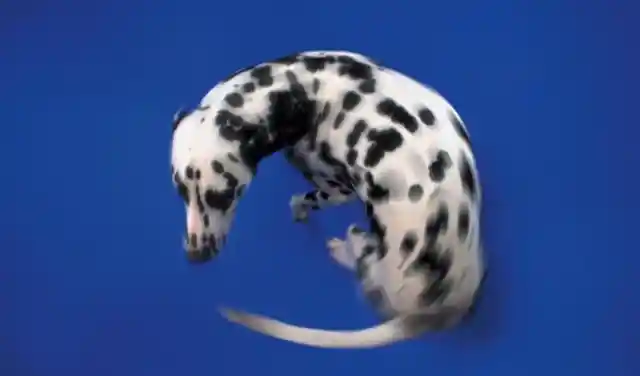
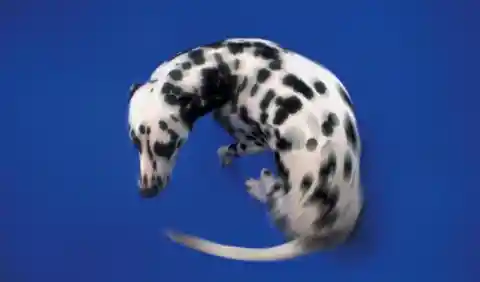
Watching your dog run around in a circle trying to catch their tails can be extremely entertaining. Older dogs who don't grow out of the behavior may chase their tails as a way to get attention, release energy, or rid of anxiety. But in most cases, it's just a playful game. A medical problem such as an injury, skin irritation or neurological condition can also cause a dog to chase their tail. What many owners do not know is that this could also be a sign of OCD. Yes, your dog can suffer from something like OCD. The word "compulsive" describes the receptive irrisistable urge to perform a behavior. A dog who displays this compulsive behavior repeatedly performs one or more behaviors over and over, to the extent that it interferes with his normal life.


Watching your dog run around in a circle trying to catch their tails can be extremely entertaining. Older dogs who don't grow out of the behavior may chase their tails as a way to get attention, release energy, or rid of anxiety. But in most cases, it's just a playful game. A medical problem such as an injury, skin irritation or neurological condition can also cause a dog to chase their tail. What many owners do not know is that this could also be a sign of OCD. Yes, your dog can suffer from something like OCD. The word "compulsive" describes the receptive irrisistable urge to perform a behavior. A dog who displays this compulsive behavior repeatedly performs one or more behaviors over and over, to the extent that it interferes with his normal life.
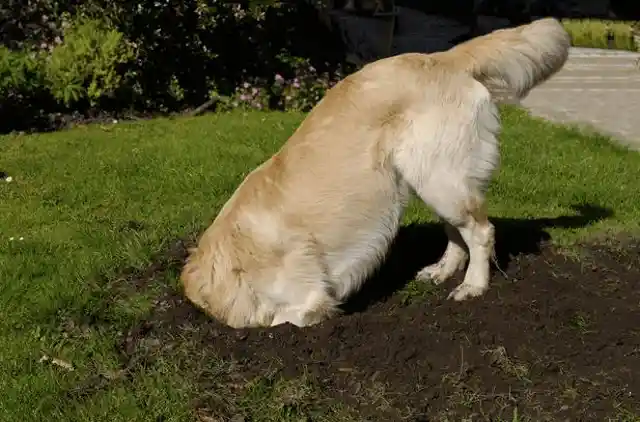
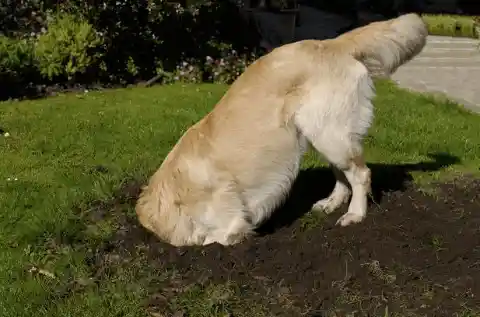
Digging is an instinctual activity, and it's written incredibly deep in a dog's DNA. It's also especially strong in terrier breeds. Dogs in natural packs will dig to hide food or to try and uncover food like small rodents. A den dug in the cool earth can also provide shelter from the heat. Most behaviors of dogs are either the product of instinct or a learned behavior, and digging is no exception. Many dogs will often dig out of boredom. If you leave your dog out alone in the yard for any length of time, he may dig just for something fun to do. Digging can also be used as a means of escape. Your dog may want to leave a fenced yard because there are interesting things to do elsewhere. Play with him out there and provide your dog with chew toys or interactive toys.


Digging is an instinctual activity, and it's written incredibly deep in a dog's DNA. It's also especially strong in terrier breeds. Dogs in natural packs will dig to hide food or to try and uncover food like small rodents. A den dug in the cool earth can also provide shelter from the heat. Most behaviors of dogs are either the product of instinct or a learned behavior, and digging is no exception. Many dogs will often dig out of boredom. If you leave your dog out alone in the yard for any length of time, he may dig just for something fun to do. Digging can also be used as a means of escape. Your dog may want to leave a fenced yard because there are interesting things to do elsewhere. Play with him out there and provide your dog with chew toys or interactive toys.
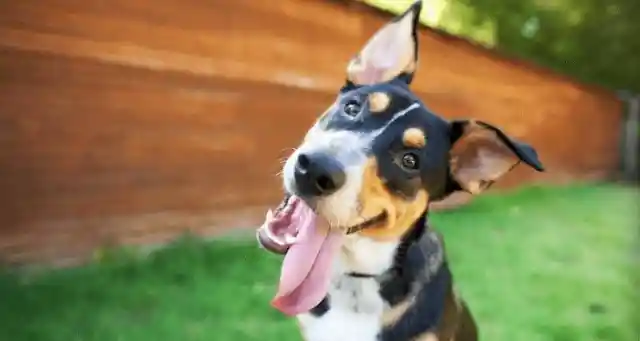
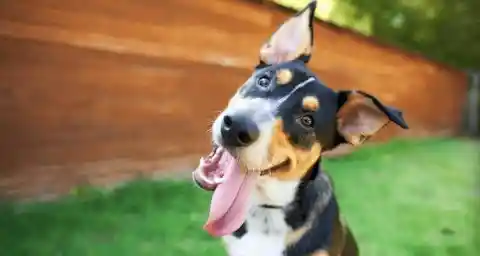
Strange noises, speaking in an unfamiliar tone, or even whistling can lead to your dog doing this cute pose. The science behind it is simple, your dog's very sensitive hearing is picking something different; they're interested in figuring out what the noise is and how to make sense of it. Let's say you're in a loud, crowded place, trying to carry on a conversation with someone. It's hard to hear, so you turn one of your ears toward the source of the sound and perk it up. Sometimes you use your hand to fold your ear lobe to block out the extra noise. Well, many scientists suggest that's exactly what's happening when your dog's head tilts.


Strange noises, speaking in an unfamiliar tone, or even whistling can lead to your dog doing this cute pose. The science behind it is simple, your dog's very sensitive hearing is picking something different; they're interested in figuring out what the noise is and how to make sense of it. Let's say you're in a loud, crowded place, trying to carry on a conversation with someone. It's hard to hear, so you turn one of your ears toward the source of the sound and perk it up. Sometimes you use your hand to fold your ear lobe to block out the extra noise. Well, many scientists suggest that's exactly what's happening when your dog's head tilts.
When your dog is constantly yawning, you might think he just needs some sleep, but a dog yawning doesn't usually mean he's tired. He may be interested in napping, but it can also be a sign of fear or stress. If your dog is yawning at an increased rate around a new person, you should probably hinder the introduction. He's either picking up vibes he doesn't feel comfortable with, or he's fearful for a less-obvious reason. No matter what, a forced introduction isn't a very good idea. When it comes to dogs, not all yawns are the same. Aside from this, the reasons for yawning aren't really fully understood. Yawning could also be a sign of indifference. Many times, when a dog is faced with an aggressive dog, he will offer a yawn in response to the aggressor. This simply means that the yawning dog is not interested in any sort of conflict. It's not a sign of submission, but rather a sign of pacification. Yawning can also be seen in dominant dogs and wolves. When they are confronted with submissive or fearful pack members or strangers, they will often yawn to show their lack of concern with the submissive one.
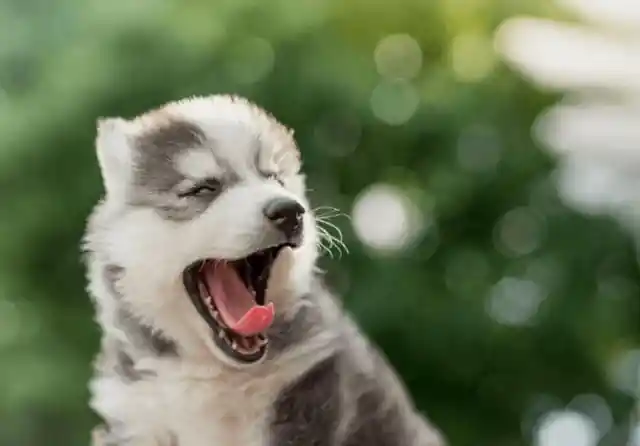
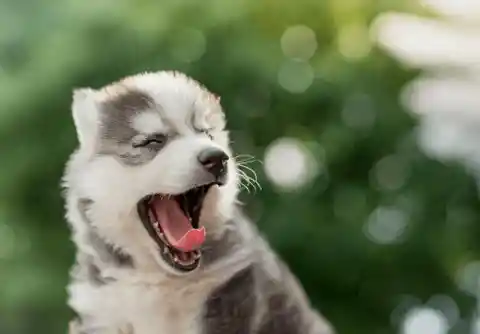
When your dog is constantly yawning, you might think he just needs some sleep, but a dog yawning doesn't usually mean he's tired. He may be interested in napping, but it can also be a sign of fear or stress. If your dog is yawning at an increased rate around a new person, you should probably hinder the introduction. He's either picking up vibes he doesn't feel comfortable with, or he's fearful for a less-obvious reason. No matter what, a forced introduction isn't a very good idea. When it comes to dogs, not all yawns are the same. Aside from this, the reasons for yawning aren't really fully understood. Yawning could also be a sign of indifference. Many times, when a dog is faced with an aggressive dog, he will offer a yawn in response to the aggressor. This simply means that the yawning dog is not interested in any sort of conflict. It's not a sign of submission, but rather a sign of pacification. Yawning can also be seen in dominant dogs and wolves. When they are confronted with submissive or fearful pack members or strangers, they will often yawn to show their lack of concern with the submissive one.
Puppies nip at their owners while they learn to communicate with their pet parents. It usually happens while they're playing since young dogs often communicate with their mouths in order to interact. It may also happen during training, or for perhaps no reason you can identify. If your young pup is a regular nipper it's important to stop it before it develops into a more problematic dog behavior down the line. Dogs usually bite due to anxiety, fear or aggression. Try to identify which mood is motivating your pet to bite. Big or small, male or female, young or old, any dog can bite. Even the cuddliest, fuzziest, sweetest pet can bite if provoked. Many dogs bite as a reaction to something. Often times, if the dog finds itself in a stressful situation, it may bit to defend itself or it's territory. Dogs can bite because they are scared or have been startled. They can bite because they feel threatened. They can bite to protect something that is valuable to them, like their puppies, their food, or a toy.
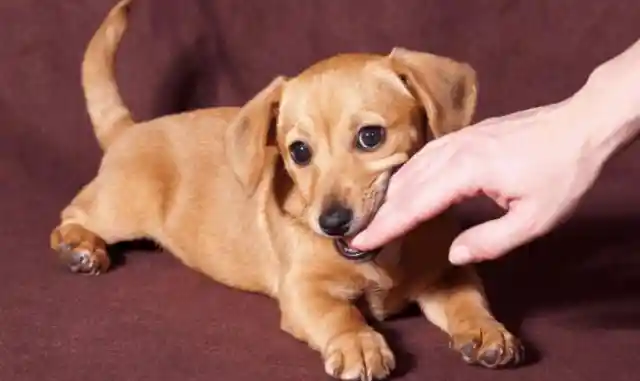
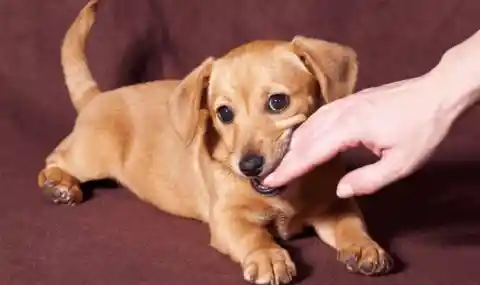
Puppies nip at their owners while they learn to communicate with their pet parents. It usually happens while they're playing since young dogs often communicate with their mouths in order to interact. It may also happen during training, or for perhaps no reason you can identify. If your young pup is a regular nipper it's important to stop it before it develops into a more problematic dog behavior down the line. Dogs usually bite due to anxiety, fear or aggression. Try to identify which mood is motivating your pet to bite. Big or small, male or female, young or old, any dog can bite. Even the cuddliest, fuzziest, sweetest pet can bite if provoked. Many dogs bite as a reaction to something. Often times, if the dog finds itself in a stressful situation, it may bit to defend itself or it's territory. Dogs can bite because they are scared or have been startled. They can bite because they feel threatened. They can bite to protect something that is valuable to them, like their puppies, their food, or a toy.
Oh, the dreaded and embarrassing crotch sniffing. However, understanding the cause of the behavior will help you realize that your dog isn't trying to be rude. If you've seen two dogs meet for the first tie, you know that a dogs version of eating is sniffing each other's genital areas and rear ends. In dogs, these areas contain scent glands that provide information about the dog, like their gender and health. Humans also have scent glands that offer clues about who they are. Hence, a dog is just sniffing around in order to get to know the person. The behavior isn't harmful, but can be annoying. The best way to train your dog to stop is by rewarding them for sitting still when a guest arrives rather than going in for a sniff.
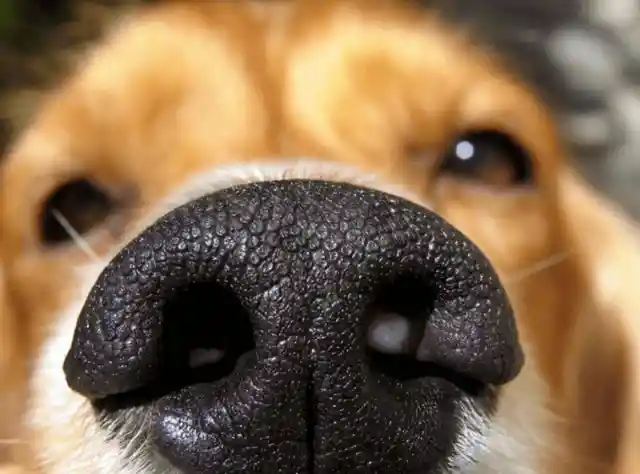
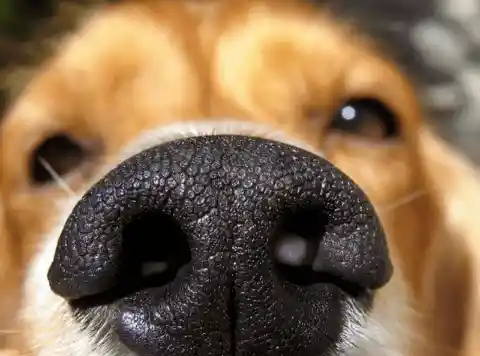
Oh, the dreaded and embarrassing crotch sniffing. However, understanding the cause of the behavior will help you realize that your dog isn't trying to be rude. If you've seen two dogs meet for the first tie, you know that a dogs version of eating is sniffing each other's genital areas and rear ends. In dogs, these areas contain scent glands that provide information about the dog, like their gender and health. Humans also have scent glands that offer clues about who they are. Hence, a dog is just sniffing around in order to get to know the person. The behavior isn't harmful, but can be annoying. The best way to train your dog to stop is by rewarding them for sitting still when a guest arrives rather than going in for a sniff.
One thing is turning an old tube-sock into a tug of war toy, but when your pup starts stealing all your socks, it can eventually turn into a problem. This actually has a very simple explanation. Your socks carry a stronger scent than the rest of your clothes, usually of sweat, and yes, to a dog's nose, everyone's feet smell. But, believe it or not, your dog would much rather have the nastiest, dirtiest old gy sock than a clean one. Another cause for this could be that your dog is going through some social anxiety. Dogs are social animals, and when you're gone they miss you tons! It's not uncommon for dogs to experience social anxiety and seek some sort of comfort when left alone your socks can serve as a security blanket for them. Since they smell like you, they can make your dog feel less anxious during your absence.
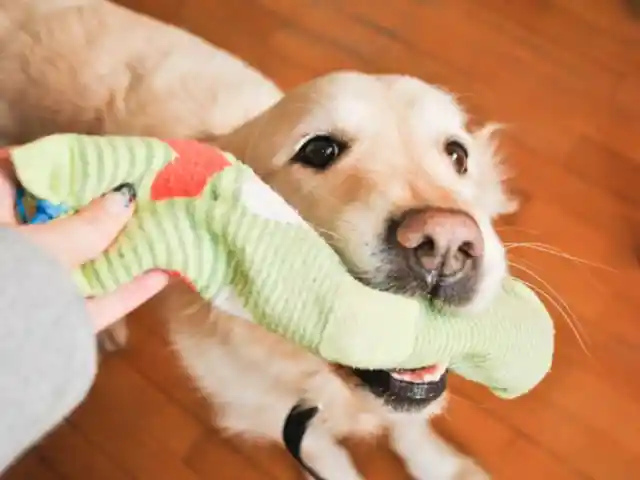
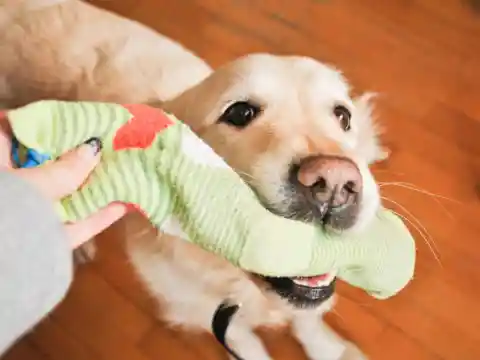
One thing is turning an old tube-sock into a tug of war toy, but when your pup starts stealing all your socks, it can eventually turn into a problem. This actually has a very simple explanation. Your socks carry a stronger scent than the rest of your clothes, usually of sweat, and yes, to a dog's nose, everyone's feet smell. But, believe it or not, your dog would much rather have the nastiest, dirtiest old gy sock than a clean one. Another cause for this could be that your dog is going through some social anxiety. Dogs are social animals, and when you're gone they miss you tons! It's not uncommon for dogs to experience social anxiety and seek some sort of comfort when left alone your socks can serve as a security blanket for them. Since they smell like you, they can make your dog feel less anxious during your absence.
So, you give your dog a bath, and he cooperates because he's a good boy. But, as soon as you're done drying him off, HE TAKES OFF! Soon, he's running around the house like the speed of light, and you're amazed. There are two possible explanations for this. One, is that although your dog is good during bath time, it's still a stressful experience for him. By running around, it gives him a way to release their stress. Another reason why they run around is to get the "stink" of the bath off. Dogs don't really like the clean smell of soap, and so running around might get the smell of them. Many times, your dog is probably shaking themselves just to dry themselves off a little bit more. Sometimes, shaking isn't enough, and that's where jetting through the house at maximum speed comes in. Sometimes, running around after a bath is just them trying to burn off some energy. Your dog actually may like the bath, and once they warm up, it could relax them. After relaxing and getting rubbed down, they're ready to run and play and get rid of all that extra energy.
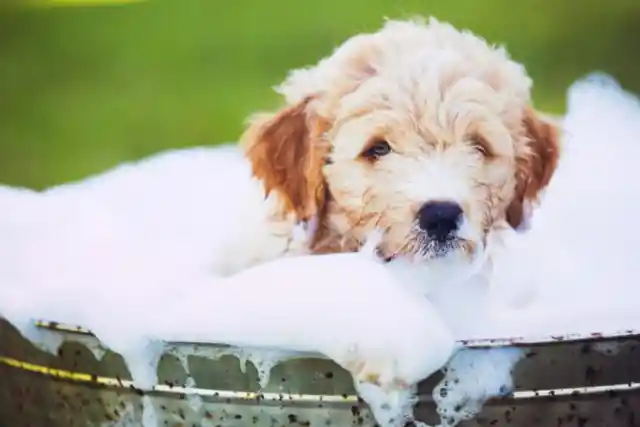
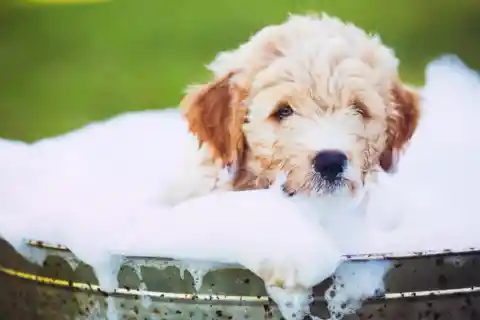
So, you give your dog a bath, and he cooperates because he's a good boy. But, as soon as you're done drying him off, HE TAKES OFF! Soon, he's running around the house like the speed of light, and you're amazed. There are two possible explanations for this. One, is that although your dog is good during bath time, it's still a stressful experience for him. By running around, it gives him a way to release their stress. Another reason why they run around is to get the "stink" of the bath off. Dogs don't really like the clean smell of soap, and so running around might get the smell of them. Many times, your dog is probably shaking themselves just to dry themselves off a little bit more. Sometimes, shaking isn't enough, and that's where jetting through the house at maximum speed comes in. Sometimes, running around after a bath is just them trying to burn off some energy. Your dog actually may like the bath, and once they warm up, it could relax them. After relaxing and getting rubbed down, they're ready to run and play and get rid of all that extra energy.
Very often dogs walk in circles before settling down for a deep sleep. This behavior is actually hardwired in them from prehistoric times. Your pups wild dog ancestors would walk around in circles to make a nest- which was an area with stomped-down grass or underbrush where they could sleep. By doing this, it can also drive out snakes or large insects that might have bothered them. After your dog circles, does your dog scratch at the bedding or carpeting before deciding to curl up? Well, just like walking in a circle, the digging action is probably an ancestral behavior related to staying safe and comfortable. However, restlessness can be a sign of discomfort or even pain. If your dog is repeatedly circling and digging but can't seem to get comfortable, she may have a health problem, such as arthritis or neurological problems.
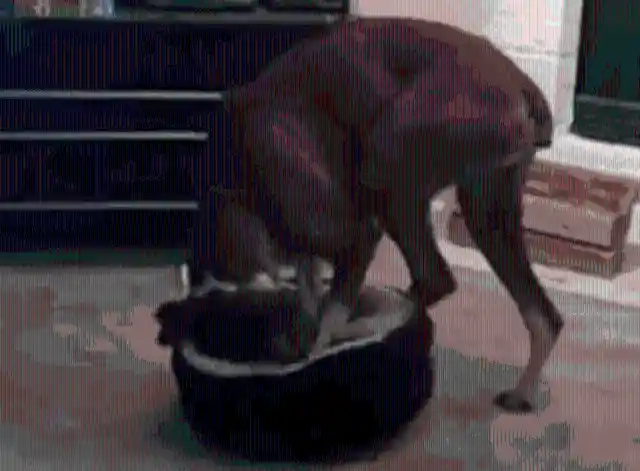
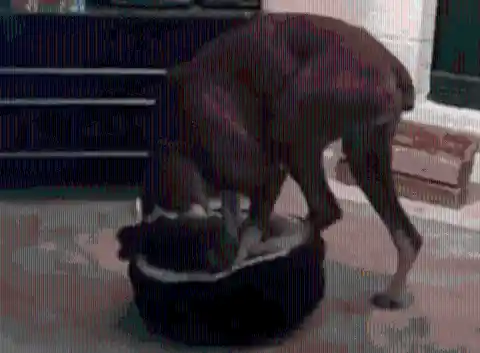
Very often dogs walk in circles before settling down for a deep sleep. This behavior is actually hardwired in them from prehistoric times. Your pups wild dog ancestors would walk around in circles to make a nest- which was an area with stomped-down grass or underbrush where they could sleep. By doing this, it can also drive out snakes or large insects that might have bothered them. After your dog circles, does your dog scratch at the bedding or carpeting before deciding to curl up? Well, just like walking in a circle, the digging action is probably an ancestral behavior related to staying safe and comfortable. However, restlessness can be a sign of discomfort or even pain. If your dog is repeatedly circling and digging but can't seem to get comfortable, she may have a health problem, such as arthritis or neurological problems.
This study suggests that dogs are sensitive to small variations in Earth's magnetic field. After examining 70 dogs-made up of 37 breeds over two years, 1,893 defecations and 5,582 urinations, researchers found that under "calm magnetic field conditions," dogs preferred to "excrete with the body being alighed along the north-south axis," avoiding east-west altogether. Dogs aren't just particular about their "nests", but they also like to go #2 while being aligned with the north-south axis of the Earth's magnetic field. Researches were able to prove this by doing a study involving 57 different breeds, and they are unsure how the dogs are able to sense the magnetic field, or why they have such a specific position.
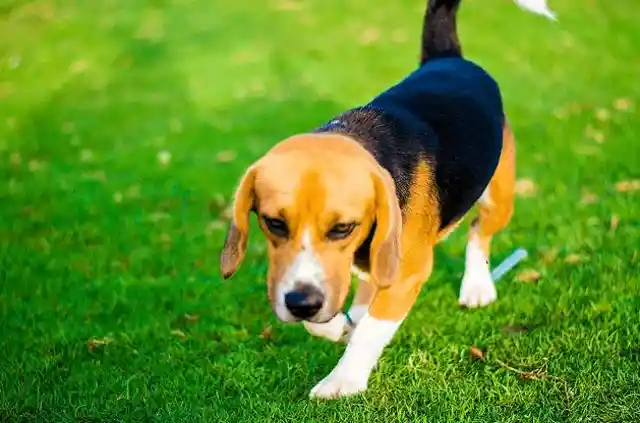
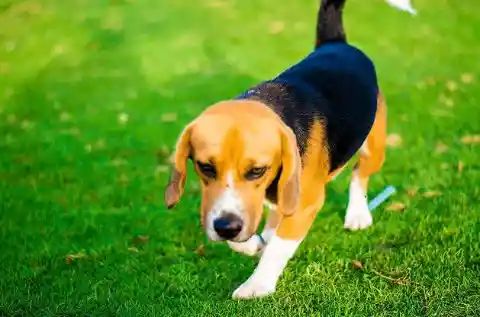
This study suggests that dogs are sensitive to small variations in Earth's magnetic field. After examining 70 dogs-made up of 37 breeds over two years, 1,893 defecations and 5,582 urinations, researchers found that under "calm magnetic field conditions," dogs preferred to "excrete with the body being alighed along the north-south axis," avoiding east-west altogether. Dogs aren't just particular about their "nests", but they also like to go #2 while being aligned with the north-south axis of the Earth's magnetic field. Researches were able to prove this by doing a study involving 57 different breeds, and they are unsure how the dogs are able to sense the magnetic field, or why they have such a specific position.
Besides the obvious guarding, growling and biting, many dogs can show a variety of dominant behaviors that most of the time go unrecognized by their owners. It's not common that dogs show dominance overnight. There's normally signs leading up to it over the years and the dominant alpha dogs do not always growl and bite. It is important for humans to retain their leadership over their dogs. Although it may seem like play behavior, or an enthusiastic greeting, jumping up on you is actually a sign that your dog is trying to assert their dominance over you. By encouraging this behavior with affection, you are reinforcing the behavior.
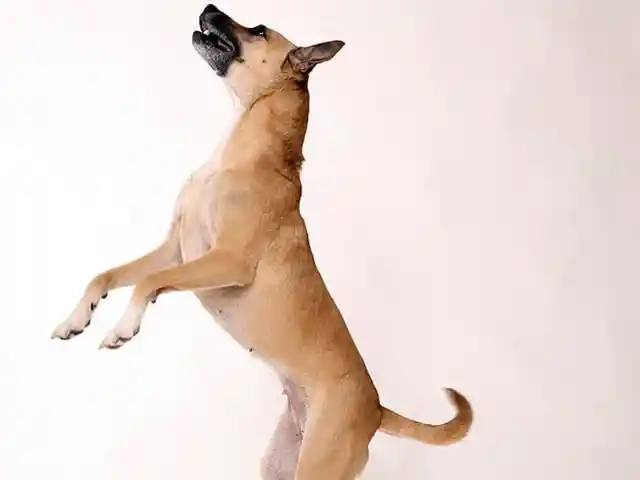
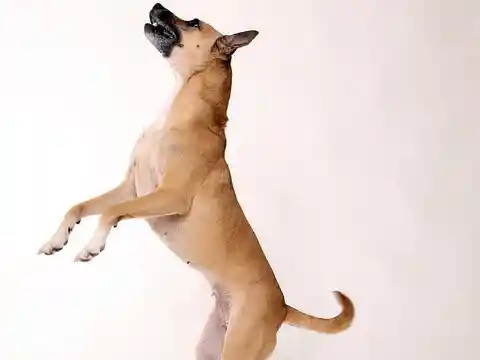
Besides the obvious guarding, growling and biting, many dogs can show a variety of dominant behaviors that most of the time go unrecognized by their owners. It's not common that dogs show dominance overnight. There's normally signs leading up to it over the years and the dominant alpha dogs do not always growl and bite. It is important for humans to retain their leadership over their dogs. Although it may seem like play behavior, or an enthusiastic greeting, jumping up on you is actually a sign that your dog is trying to assert their dominance over you. By encouraging this behavior with affection, you are reinforcing the behavior.
Yes, it's one of the grossest things a dog can do. Eating poop, or in more specific terms, coprophagia, is actually a common habit amongst dogs. We may never fully understand why so many dogs enjoy eating feces.There are many theories that include it being a sign of illness or malnutrition, or it's the effect of anxiety and stress, or a form of pica. While this habit isn't really dangerous to dogs, it's quite disgusting and not exactly healthy. Specific training can help you break this habit.
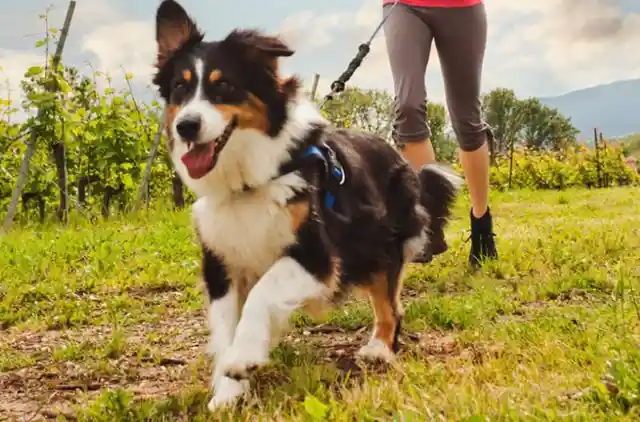
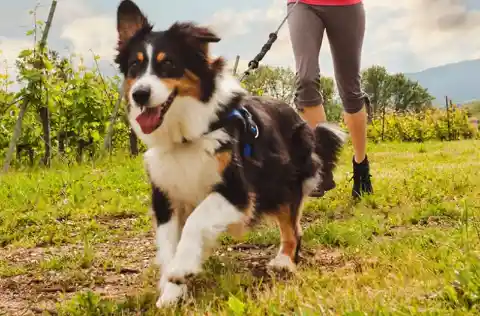
Yes, it's one of the grossest things a dog can do. Eating poop, or in more specific terms, coprophagia, is actually a common habit amongst dogs. We may never fully understand why so many dogs enjoy eating feces.There are many theories that include it being a sign of illness or malnutrition, or it's the effect of anxiety and stress, or a form of pica. While this habit isn't really dangerous to dogs, it's quite disgusting and not exactly healthy. Specific training can help you break this habit.
Panting is a completely normal doggy behavior. However, what's the reason for it? Dogs pant mostly to cool themselves off. Because they don't sweat the way humans do, dogs have to rely on the exchange of air at their mouths to cool their bodies off. To assist them, we should do our best to keep our dogs cool, preventing heat exhaustion and heat stroke. Some dogs can pant due to anxiety, stress or fear. Removing your dog from the situation is the best action you can take.
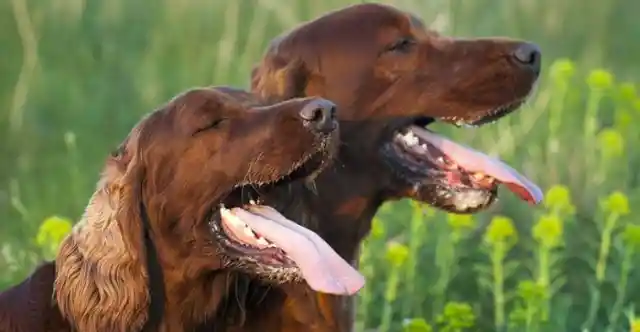
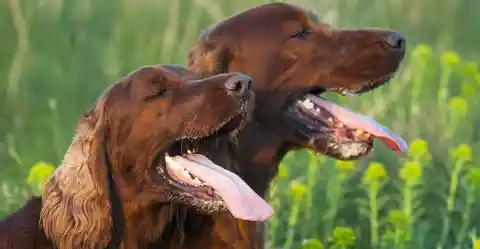
Panting is a completely normal doggy behavior. However, what's the reason for it? Dogs pant mostly to cool themselves off. Because they don't sweat the way humans do, dogs have to rely on the exchange of air at their mouths to cool their bodies off. To assist them, we should do our best to keep our dogs cool, preventing heat exhaustion and heat stroke. Some dogs can pant due to anxiety, stress or fear. Removing your dog from the situation is the best action you can take.
When your dog looks in the mirror, what do they see? Do they see someone to play with? An adversary? Do they actually recognize themselves, or do they even have a sense of self? These are extremely abstract questions that have yet to be answered, so the most we can do is just assume. Does your dog look or bark at his reflection? This behavior is completely normal when you think about it. There's a moving, odorless dog that appears in the house, it's probably about as scary him as seeing a ghost. Many dogs eventually learn to ignore the weird Spector.
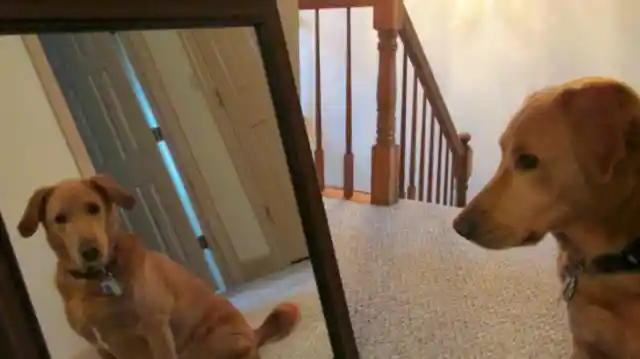
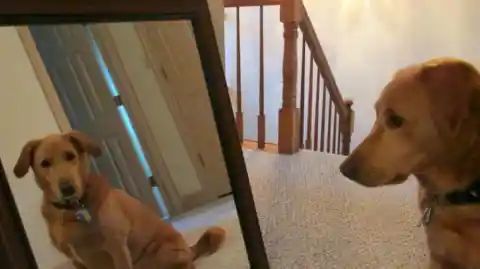
When your dog looks in the mirror, what do they see? Do they see someone to play with? An adversary? Do they actually recognize themselves, or do they even have a sense of self? These are extremely abstract questions that have yet to be answered, so the most we can do is just assume. Does your dog look or bark at his reflection? This behavior is completely normal when you think about it. There's a moving, odorless dog that appears in the house, it's probably about as scary him as seeing a ghost. Many dogs eventually learn to ignore the weird Spector.
Does the site of the vacuum cleaner send your dog running and hiding? Do they run from cars, or the dishwasher? Or maybe even a slippery floor? You might try to reason their fear with them, but for many dogs ordinary objects can cause a fright for them. Fear is a very complex thing for them. Some dogs develop fears after bad experiences, while others develop fears after lack of exposure. Fears can also be made worse by the dogs owner. If a dogs afraid whenever the dishwasher starts and the owner either reprimands the dog or is overly consoling to them, the fear can be reinforced. This is why early socialization and exposure is important to help a dog develop a confident personality.
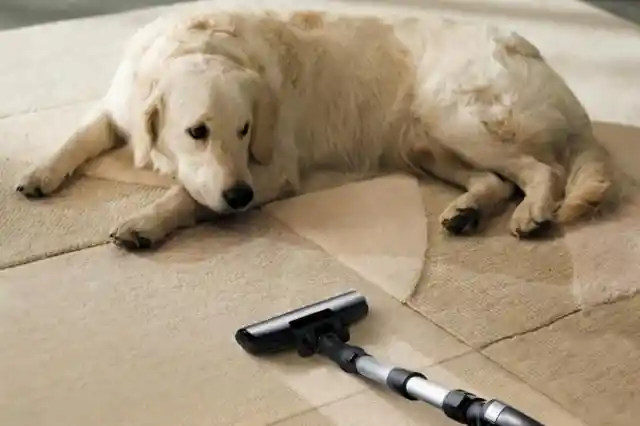
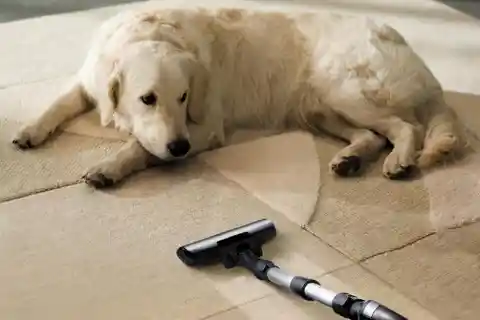
Does the site of the vacuum cleaner send your dog running and hiding? Do they run from cars, or the dishwasher? Or maybe even a slippery floor? You might try to reason their fear with them, but for many dogs ordinary objects can cause a fright for them. Fear is a very complex thing for them. Some dogs develop fears after bad experiences, while others develop fears after lack of exposure. Fears can also be made worse by the dogs owner. If a dogs afraid whenever the dishwasher starts and the owner either reprimands the dog or is overly consoling to them, the fear can be reinforced. This is why early socialization and exposure is important to help a dog develop a confident personality.
In a research study published by Animal Planet, it was noted that while your dog might wag his tail when he is happy, he only wags his tail in the presence of people or other animals. You can leave their favorite toy in the room or a tasty snack and that tail stays put--it only wags when there are others around.
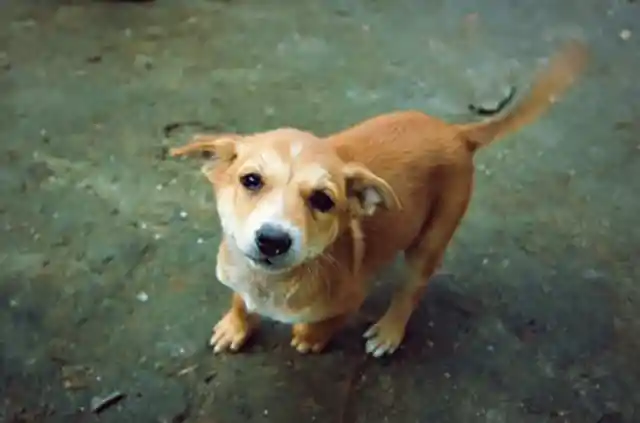
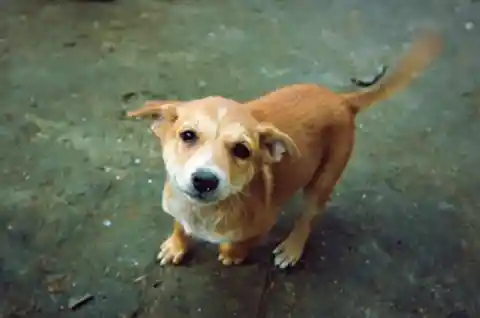
In a research study published by Animal Planet, it was noted that while your dog might wag his tail when he is happy, he only wags his tail in the presence of people or other animals. You can leave their favorite toy in the room or a tasty snack and that tail stays put--it only wags when there are others around.
Dogs do not start wagging their tails the minute they are born, it is a skill they need to learn. Most puppies will start wagging their tail around one and a half months after they are born as they try to "communicate" with their siblings and their mother.
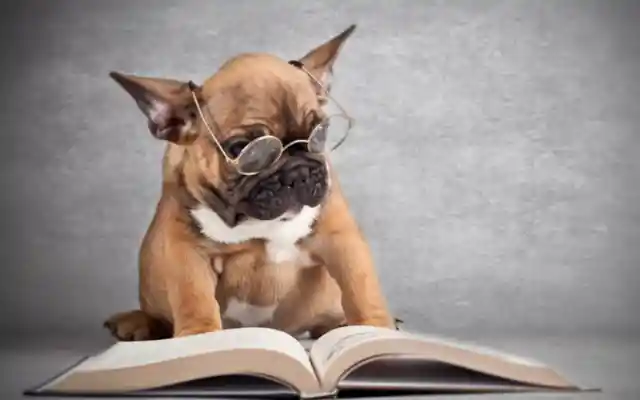
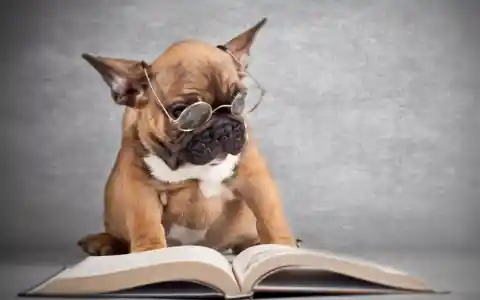
Dogs do not start wagging their tails the minute they are born, it is a skill they need to learn. Most puppies will start wagging their tail around one and a half months after they are born as they try to "communicate" with their siblings and their mother.
Your dog's tail is literally an external extension of the spine. It has its own discs, muscles, and anchors. Being more exposed than the remainder spine, the tail is far more susceptible to injury, but in most cases will recover fully. Animal experts believe that the tail evolved as a way to help dogs keep their balance when walking along narrow ledges or paths. While they may no longer need this type of assistance, that tail has found numerous other uses.
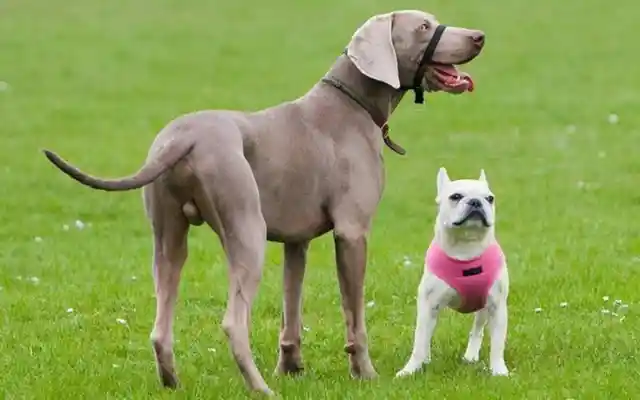
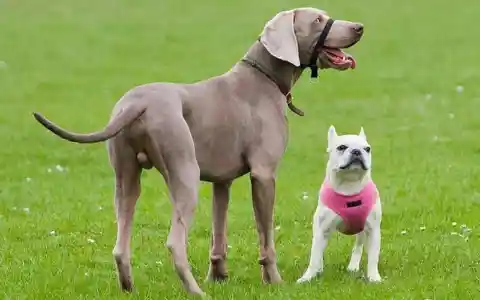
Your dog's tail is literally an external extension of the spine. It has its own discs, muscles, and anchors. Being more exposed than the remainder spine, the tail is far more susceptible to injury, but in most cases will recover fully. Animal experts believe that the tail evolved as a way to help dogs keep their balance when walking along narrow ledges or paths. While they may no longer need this type of assistance, that tail has found numerous other uses.
Tail docking of dogs is believed to have began for a few reasons. It is argued that docking increases a dog's strength or speed, and that docking the tail reduces injury in working dogs or hunting dogs. Although tail docking seems to have emerged for a variety of reasons, it was simply proposed primarily to improve appearance of some dog breeds. While many breeders and owners in the U.S. have their dog's tails docked, there are many countries around the world such as Australia, Austria, Canada, Finland, Greece, Norway, and Turkey have outlawed this practice.
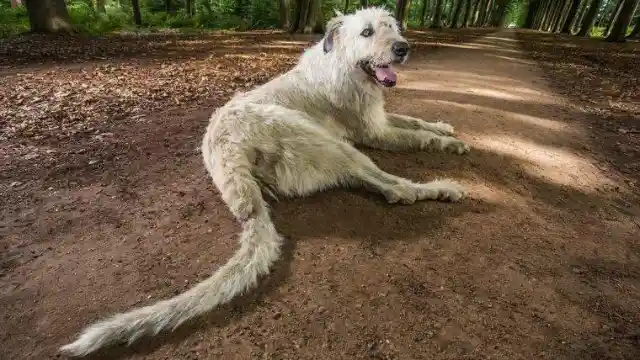
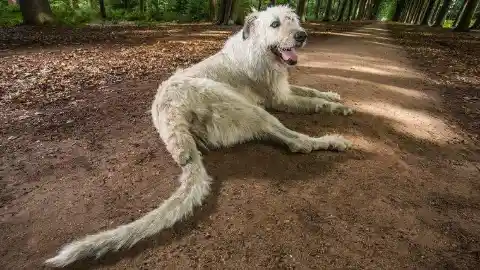
Tail docking of dogs is believed to have began for a few reasons. It is argued that docking increases a dog's strength or speed, and that docking the tail reduces injury in working dogs or hunting dogs. Although tail docking seems to have emerged for a variety of reasons, it was simply proposed primarily to improve appearance of some dog breeds. While many breeders and owners in the U.S. have their dog's tails docked, there are many countries around the world such as Australia, Austria, Canada, Finland, Greece, Norway, and Turkey have outlawed this practice.
We have all heard the term "Hair of the Dog", but did you know this phrase was coined in approximately 23 A.D? Roman naturalist and author Pliny the Elder was said to believe that the best way to cure rabies was to take the ashes from the burnt tail hairs of the dog responsible for the bite and rub them in the wound.
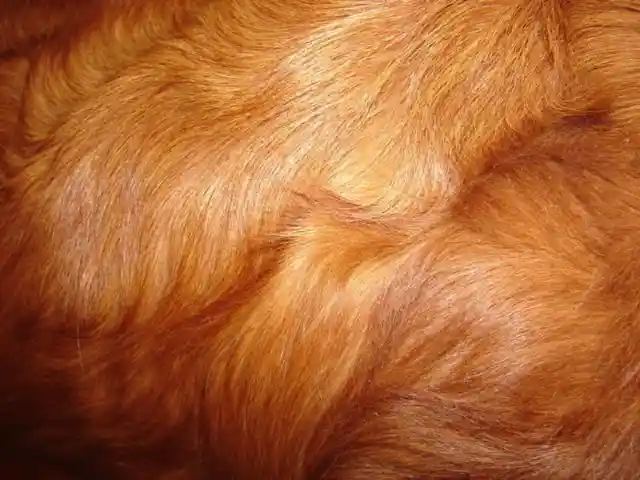
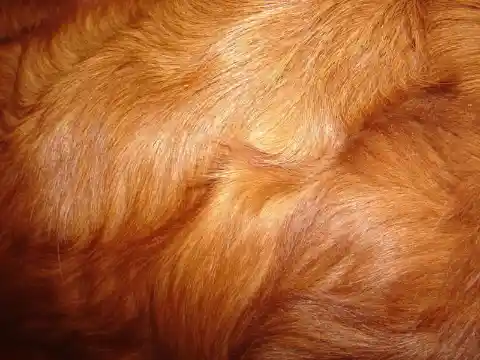
We have all heard the term "Hair of the Dog", but did you know this phrase was coined in approximately 23 A.D? Roman naturalist and author Pliny the Elder was said to believe that the best way to cure rabies was to take the ashes from the burnt tail hairs of the dog responsible for the bite and rub them in the wound.
Dogs communicate in subtle ways with their faces, specifically with their eyes. Constant eye contact from your dog is his way of showing his trust and affection towards you. Think of it as an understated ‘I love you.’ Avoiding eye contact, on the other hand, is a sign that your dog is uncomfortable, scared, or cowering after doing something naughty.


Dogs communicate in subtle ways with their faces, specifically with their eyes. Constant eye contact from your dog is his way of showing his trust and affection towards you. Think of it as an understated ‘I love you.’ Avoiding eye contact, on the other hand, is a sign that your dog is uncomfortable, scared, or cowering after doing something naughty.
Perhaps the most widely recognizable ways dogs communicate is with their tails. In addition to the joyful wagging tail, a dog’s tail can communicate a range of other emotions. For example, a slow wagging means your dog is feeling cautious, and a stiff tail held high means your dog is on alert. A low tail means your pup is feeling content, but a tucked tail means he is feeling scared. If your dog is wagging his tail vigorously enough to make his butt to wiggle (we all know what I’m talking about), he’s elated to see you!
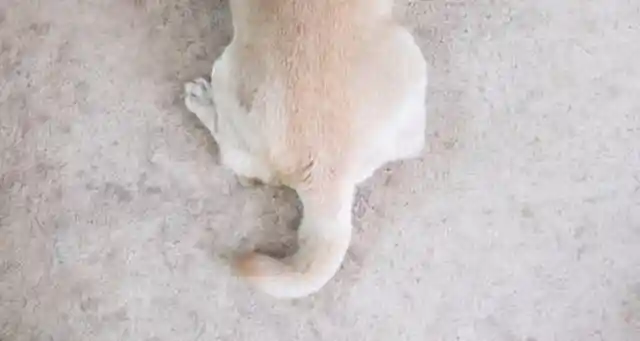
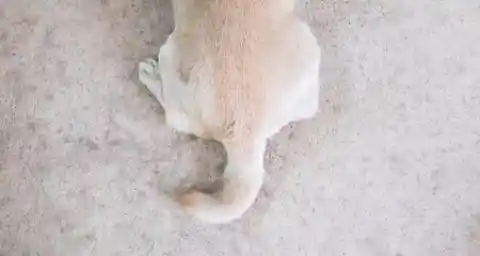
Perhaps the most widely recognizable ways dogs communicate is with their tails. In addition to the joyful wagging tail, a dog’s tail can communicate a range of other emotions. For example, a slow wagging means your dog is feeling cautious, and a stiff tail held high means your dog is on alert. A low tail means your pup is feeling content, but a tucked tail means he is feeling scared. If your dog is wagging his tail vigorously enough to make his butt to wiggle (we all know what I’m talking about), he’s elated to see you!
You’ll notice your dog flicking his tongue quickly in and out of his mouth when you’re about to scold him. This means your dog knows he has done something naughty and he feels bad about it. If your dog flicks its tongue at you, this is his way of telling you that he’s sorry!
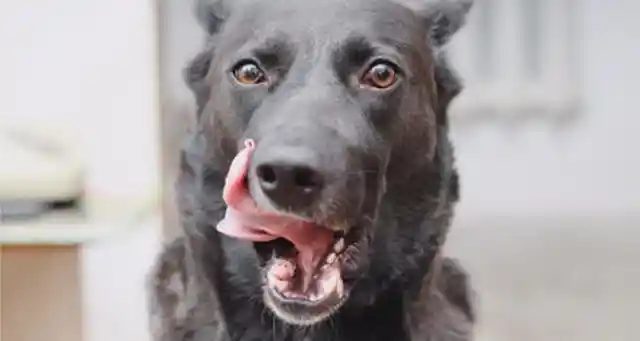
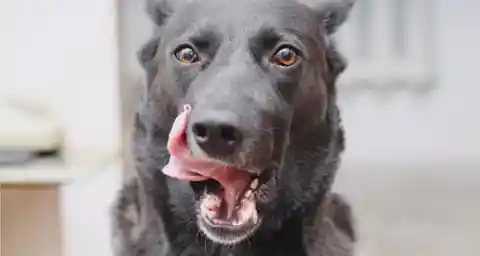
You’ll notice your dog flicking his tongue quickly in and out of his mouth when you’re about to scold him. This means your dog knows he has done something naughty and he feels bad about it. If your dog flicks its tongue at you, this is his way of telling you that he’s sorry!
In addition to face and tail movement, dogs also try to communicate using the rest of their body. If your pup rolls over and bares his belly to you, he is initiating this gesture to appease you (but a belly rub is always welcome!) Dogs also communicate with each other this way, rolling over as a sign of passive resistance to the perceived threat.
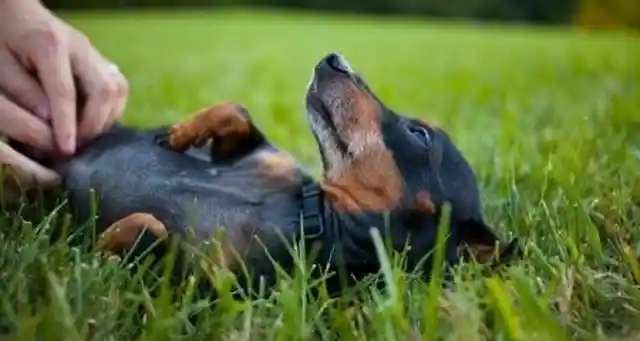
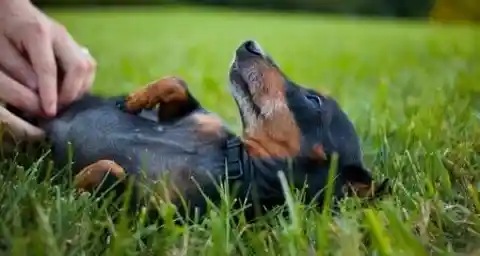
In addition to face and tail movement, dogs also try to communicate using the rest of their body. If your pup rolls over and bares his belly to you, he is initiating this gesture to appease you (but a belly rub is always welcome!) Dogs also communicate with each other this way, rolling over as a sign of passive resistance to the perceived threat.
If your dog faces you and dives into a bow with his front legs on the ground and his butt in the air, this is known as the play bow and it’s your dog’s way of telling you that it is playtime. If you want to make your dog’s day, try play bowing back at him! Your basic downward dog yoga pose will do the trick, and your pup will be grateful that you’re trying to speak his language.
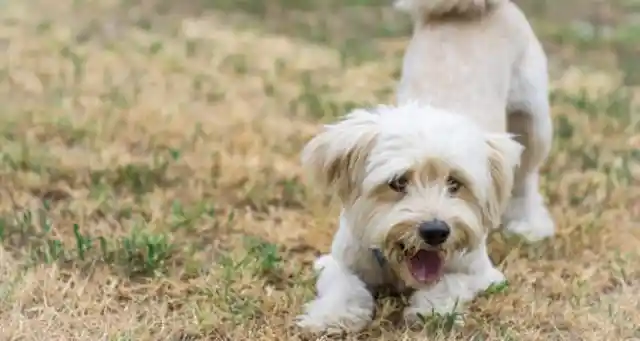
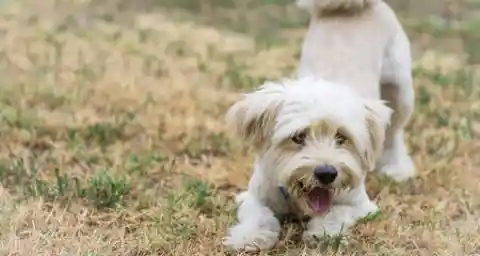
If your dog faces you and dives into a bow with his front legs on the ground and his butt in the air, this is known as the play bow and it’s your dog’s way of telling you that it is playtime. If you want to make your dog’s day, try play bowing back at him! Your basic downward dog yoga pose will do the trick, and your pup will be grateful that you’re trying to speak his language.
Dogs communicate that they want attention by raising a paw and touching you. You probably see this most often when you’re sitting and your dog approaches you to put a paw on your knee. In puppies, this is communicated by pawing the air repeatedly.
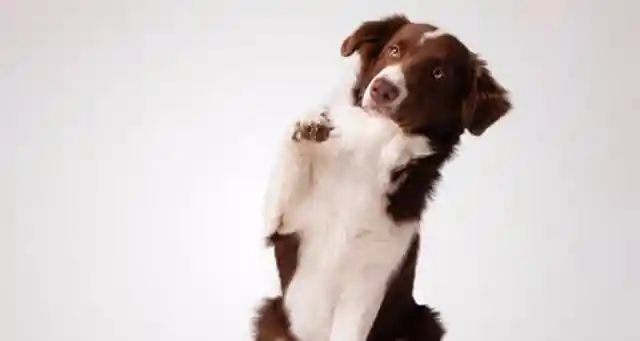
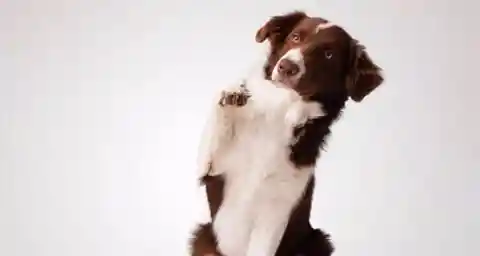
Dogs communicate that they want attention by raising a paw and touching you. You probably see this most often when you’re sitting and your dog approaches you to put a paw on your knee. In puppies, this is communicated by pawing the air repeatedly.
Every once in a while your dog might bring you a ball, stick, or other toy. Most people read this as an invitation to play, which it very well might be. But if your dog brings you one of his favorite toys and drops it at your feet, it’s more likely that he is giving it to you as a gift! This is your pup’s way of showing affection for you by sharing his favorite things with you. Since dogs cannot talk, it is not always possible to have a definitive answer to his behavior. Having a dog bring you his toy is common and there are many theories about this action. Your dog might be bringing you a toy upon greeting because he thinks of you as the alpha, and this is a way of ensuring his place in your pack. Another theory is that he is expressing his trust in you. Dogs can be quite possessive of their toys, so his desire to bring his toy to you could be his way of expressing his faith in you to care for his toy.
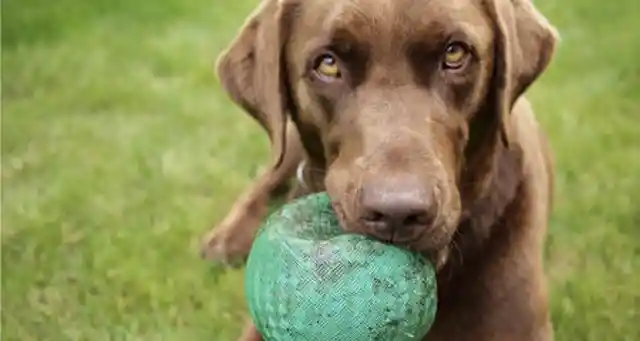
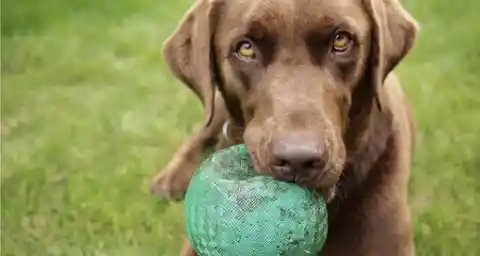
Every once in a while your dog might bring you a ball, stick, or other toy. Most people read this as an invitation to play, which it very well might be. But if your dog brings you one of his favorite toys and drops it at your feet, it’s more likely that he is giving it to you as a gift! This is your pup’s way of showing affection for you by sharing his favorite things with you. Since dogs cannot talk, it is not always possible to have a definitive answer to his behavior. Having a dog bring you his toy is common and there are many theories about this action. Your dog might be bringing you a toy upon greeting because he thinks of you as the alpha, and this is a way of ensuring his place in your pack. Another theory is that he is expressing his trust in you. Dogs can be quite possessive of their toys, so his desire to bring his toy to you could be his way of expressing his faith in you to care for his toy.